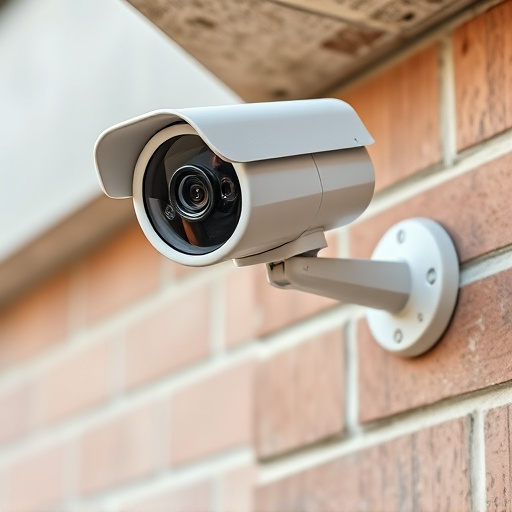Dummy security cameras, mimicking real infrared sensors, are an affordable way to enhance home and business security through strategic placement according to the Dummy Security Camera Height Guidelines. Positioned at eye level or slightly elevated (5-10 feet), these fake cameras act as a psychological deterrent while providing a crucial extra layer of protection. Regularly check LED indicators for consistent behavior and physical alignment with genuine models, maintaining system integrity. Accurate infrared sensor placement and technology are vital for robust home security, preventing false alarms and ensuring comprehensive protection.
“Uncover the truth behind fake camera infrared sensor LEDs with our comprehensive guide. In an era where home security is paramount, understanding the components of your surveillance system is crucial. This article delves into ‘Understanding Fake Camera Infrared Sensor LEDs,’ offering a detailed overview for tech-savvy individuals and homeowners alike. We also explore ‘Dummy Security Camera Height Guidelines’ to ensure optimal safety measures, and provide practical tips on ‘How to Spot’ these fakes. Learn about the potential risks of inaccurate infrared sensors and enhance your home security today.”
- Understanding Fake Camera Infrared Sensor LEDs: A Comprehensive Overview
- Dummy Security Camera Height Guidelines: Best Practices and Safety Measures
- How to Spot a Fake Infrared Sensor LED in Your Security System
- The Impact of Using Inaccurate Infrared Sensors on Home Security
Understanding Fake Camera Infrared Sensor LEDs: A Comprehensive Overview
Fake camera infrared sensor LEDs, often referred to as dummy security camera components, play a significant role in enhancing home and business security. These LEDS mimic the appearance and function of real infrared sensors found in security cameras, providing an additional layer of protection against potential intruders. Understanding their design and operation is crucial when considering the Dummy Security Camera Height Guidelines for optimal placement and effectiveness.
These fake cameras are meticulously crafted to look identical to genuine security camera components, complete with LED indicators that mimic heat signatures or motion detection. When strategically placed, they can deter criminals by creating the illusion of active surveillance. By adhering to specific height guidelines, these dummy cameras can be effectively integrated into existing security systems, adding a sense of security without the need for costly and extensive hardware upgrades.
Dummy Security Camera Height Guidelines: Best Practices and Safety Measures
When placing a dummy security camera, understanding the optimal height is crucial for both visual deterrence and effective surveillance. The general rule of thumb suggests positioning the camera at eye level or slightly elevated. This typically means mounting it at a height between 5 to 10 feet (approximately 1.5 to 3 meters) above the ground. Eye-level placement ensures that potential intruders can see the camera, acting as a psychological deterrent.
Adhering to these dummy security camera height guidelines involves considering both practical and safety aspects. Mounting too high may obscure the camera’s field of view, while mounting too low could make it easily accessible for tampering. Following best practices ensures not only optimal visual coverage but also maintains the integrity of your security system, providing clear footage while deterring malicious activities.
How to Spot a Fake Infrared Sensor LED in Your Security System
When evaluating your security system, it’s crucial to ensure every component, including LED indicators, functions as intended. Fake infrared sensor LEDs can be hard to detect, but there are telltale signs. One common red flag is inconsistent or unusual behavior—for instance, the LED might not turn on when a dummy security camera simulates movement, or it may illuminate in unexpected patterns.
Physically inspect the LED for any obvious deviations from genuine models. Check for differences in shape, size, and color. Fake sensors often lack the precision and uniformity of real ones. Additionally, refer to the Dummy Security Camera Height Guidelines for typical placement and appearance; deviations from these standards could indicate a replacement or imitation component.
The Impact of Using Inaccurate Infrared Sensors on Home Security
The accuracy of infrared sensors in security cameras is paramount for effective home protection. Inaccurate or faulty sensors can lead to false alarms, causing unnecessary stress and potential security breaches. When an infrared sensor fails to detect movement as intended due to poor quality or misalignment, it may result in missed alerts, leaving homes vulnerable during unwelcome intrusions. This is particularly concerning given the rise of sophisticated home security systems that heavily rely on these sensors for perimeter monitoring.
Adhering to dummy security camera height guidelines and ensuring proper sensor placement are crucial steps in maintaining robust home security. Correct positioning and reliable infrared technology work in tandem to safeguard properties, providing peace of mind for homeowners. By understanding the implications of inaccurate sensors, individuals can make informed decisions when selecting and installing security equipment, ultimately enhancing overall home protection measures.
In conclusion, while understanding the intricacies of fake camera infrared sensor LEDs is crucial for enhancing home security, adhering to the recommended Dummy Security Camera Height Guidelines remains paramount. By spotting and avoiding these fraudulent components, you can ensure your security system’s accuracy and reliability. Remember that investing in quality sensors is vital for a robust defense against potential threats, making it a wise decision to prioritize genuine parts for comprehensive protection.
